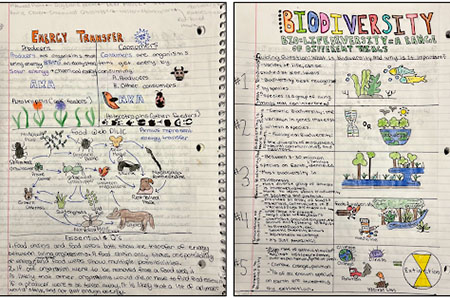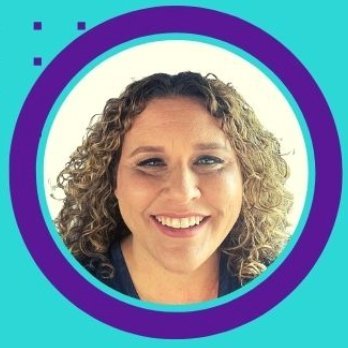Phenomenal Science Notebooks
By Jennifer Weibert, Science Coordinator
[article was originally published on March 15, 2023]
It was a packed house at the CASE conference for my two sessions! Over 250 teachers came to learn about phenomenal science notebooks. The first session focused on sketchnoting in science.
Taking lecture notes plays an important role in what students do to learn content in their science class. Teachers often feel that students are not engaged during note taking, nor do students remember much from taking notes.
There is also the issue of teachers getting tired of the same old same old lecture. I know of a great solution for all of these problems: there is a way to mix it up and get kids engaged by using sketchnotes!

Sketchnotes are a form of intentional note-taking that incorporates color, picture, text, and templates. It is known that using color, pictures, and text makes the brain remember content better. So why wouldn’t we want every assignment to be sketchnoted out? During my session, everyone received a workbook and we got to work! Teachers practiced the basic elements of sketchnoting with two major takeaways. One- that everyone can draw even if you think you can’t. Two-sketchnoting isn’t complicated once you train your students with the right toolbox. Sketchnoting is something that all students can do, it’s a low floor/high ceiling opportunity for ALL students! We finished the session by practicing how to take lecture notes and make them into sketchnotes in our workbook.
My second session focused on putting sketchnotes to work in all assignments, therefore creating great interactions in notebooks. The goal of this session was to learn how to focus on what you assign to students and make sure that you are scaffolding for success. Are you setting up the page with a template so students know how to use their space? Are you then telling students what to put in the space? You need to be explicit with these two steps of scaffolding, otherwise you end up with blank pages and incomplete work. I have seen notebooks fail due to too many blank pages, it’s frustrating for all involved! Notebooks should be templated out and use sketchnotes on every page. Let students take ownership of their learning and become highly engaged in the content. You have my permission to stop the cutting and gluing of worksheets, stop spending hours at the copy machine and let students do the work!
I have so much more for you to learn to get started on sketchnotes and putting interactions in notebooking! You can head over to my blog to keep learning and pick up some free resources.







